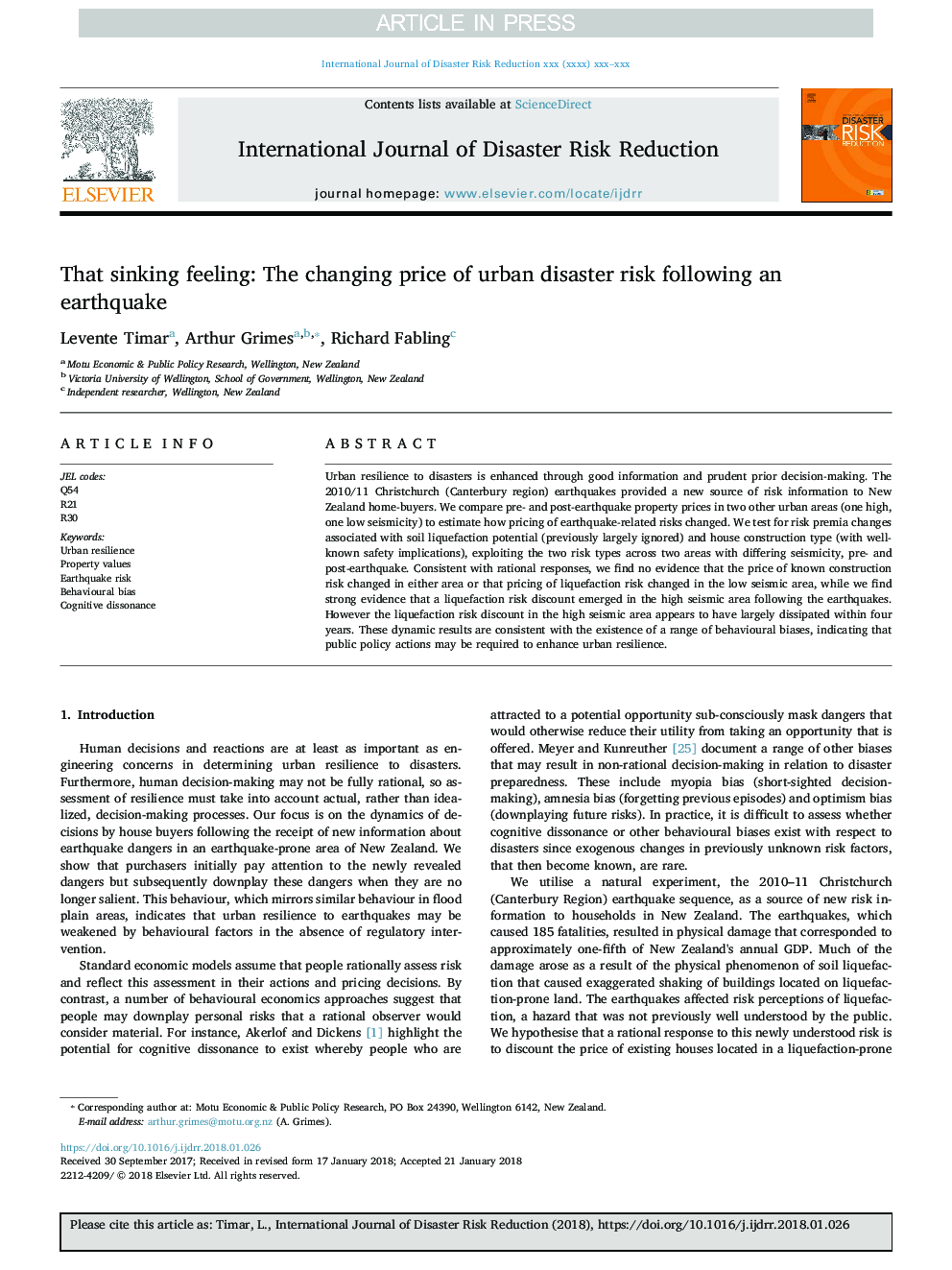| Article ID | Journal | Published Year | Pages | File Type |
|---|---|---|---|---|
| 11005314 | International Journal of Disaster Risk Reduction | 2018 | 11 Pages |
Abstract
Urban resilience to disasters is enhanced through good information and prudent prior decision-making. The 2010/11 Christchurch (Canterbury region) earthquakes provided a new source of risk information to New Zealand home-buyers. We compare pre- and post-earthquake property prices in two other urban areas (one high, one low seismicity) to estimate how pricing of earthquake-related risks changed. We test for risk premia changes associated with soil liquefaction potential (previously largely ignored) and house construction type (with well-known safety implications), exploiting the two risk types across two areas with differing seismicity, pre- and post-earthquake. Consistent with rational responses, we find no evidence that the price of known construction risk changed in either area or that pricing of liquefaction risk changed in the low seismic area, while we find strong evidence that a liquefaction risk discount emerged in the high seismic area following the earthquakes. However the liquefaction risk discount in the high seismic area appears to have largely dissipated within four years. These dynamic results are consistent with the existence of a range of behavioural biases, indicating that public policy actions may be required to enhance urban resilience.
Related Topics
Physical Sciences and Engineering
Earth and Planetary Sciences
Geophysics
Authors
Levente Timar, Arthur Grimes, Richard Fabling,
